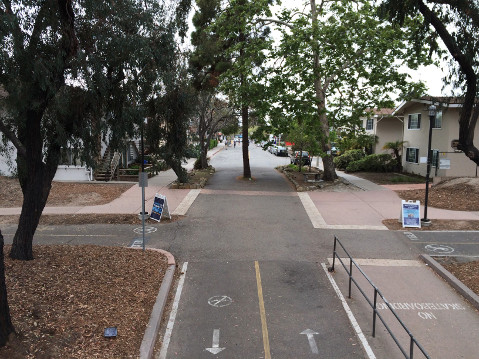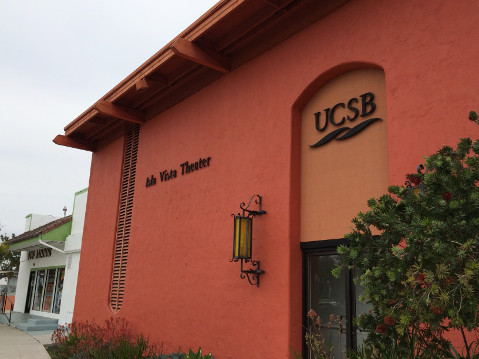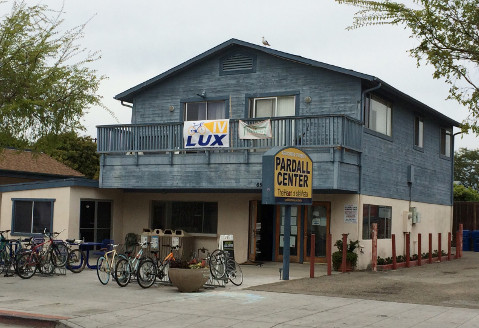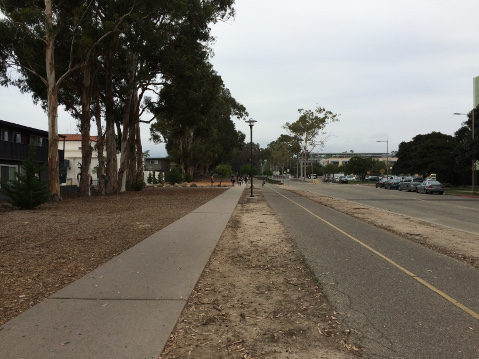UCSB’s Adopted Child — Isla Vista
Influence Has Evolved from Incidental to Purposeful

Isla Vista cars sport Gaucho stickers and license-plate holders. UCSB Police Department officers grab lunch at downtown eateries. Fraternity and sorority houses line I.V.’s eastern streets, and two of the biggest buildings in town are UCSB lecture halls. The university’s presence in I.V. is on par with that of Spanish colonial architecture in Santa Barbara.
UCSB is as much and probably more a parent to the county’s most boisterous urban child as the county — which administers said child — itself is.
Isla Vista was but a sparsely inhabited, out-of-the-way neighborhood until UCSB became an established University of California school following World War II and relocated to this sleepy seaside mesa. The UC Regents initially considered annexing I.V. for student housing purposes, and its ultimate decision to leave the town to its own devices was perhaps the most trajectory-setting choice in the community’s early history.

The first commercial front in I.V. was the University General Store — now Isla Vista Market — which opened in the early ’50s. From that time on, I.V.’s population has been inextricably linked to the university’s enrollment. According to local historian Malcolm Gault-Williams’s Don’t Bank on Amerika, an exhaustively comprehensive account of the bank-burning riots of the early ’70s, the half-square-mile community’s population jumped from a mere 350 in 1950 to 13,000 in 1970.
Though the university maintained a relatively hands-off approach for much of the buildup to those riots, its policies still helped fan the unrest that profoundly altered the history and culture of I.V. The university’s own free-speech dispute, unfair treatment of black students, and calling in off-campus police for the first time in 1970 all helped facilitate the unrest. This in turn led to the self-reflection that birthed constructive community-building endeavors like self-governance campaigns.
Nowadays, the university’s ascendancy into the upper echelons of U.S. post-secondary education has necessitated a greater need to manage and cultivate a top-tier reputation. Though it’s not university-controlled, the community that is home to the greater part of UCSB’s student body is inextricably linked to that reputation. I.V.’s well-known party culture and the safety concerns generated by events like Halloween and Deltopia are potential deterrents for prospective students.
If anyone is aware of I.V.’s influence on UCSB’s reputation, it’s Chancellor Henry Yang, who’s been at the helm for over two decades and has presided over much of the university’s growing prestige. Under his tenure, UCSB has channeled considerably more attention into I.V.

UCSB owns all of the land that surrounds I.V. on three sides, maintains several of its own apartment buildings on the north edge of town, and owns the two lecture halls in the community — I.V. Theater and Embarcadero Hall (the latter is the site of the razed Bank of America). In 2015, the UC Regents shelled out a whopping $156 million to purchase the three Tropicana apartment complexes for student housing, fulfilling in small part their original intentions from the ’50s. Associated Students recently opened the Pardall Center on the eponymous road as an off-campus student resource building, while another prime parcel on the corner of Pardall and Embarcadero del Norte is in escrow for sale to UCSB.
As it lays down physical roots in the community, the university is increasingly helping to set the tone for I.V.’s culture and operation. The UCSB Police Department has helped staff the I.V. Foot Patrol for years, and the university’s most recent Long Range Development Plan (LRDP) addresses urban infrastructure goals and problems in town, tying campus redevelopment with I.V.’s and aiming to integrate the contiguous infrastructure. And as the university prepares to embark on a new era of increased enrollment, much of the mitigation fees the university has agreed to pay to offset its effects go to I.V. in one way or another, including up to $2 million for traffic, bike, and pedestrian improvements. In August, MTD Line 28, paid for entirely by UCSB, will begin busing students around locally for free.

UCSB has also taken a recent interest in the I.V. arts and creative scene — most notably with art professor Kim Yasuda’s I.V. OpenLab, which originated the monthly First Friday arts block party and the BluNite memorial installation for the May 2014 tragedy. Associated Students has also begun to put on remarkably successful $5 concerts for students during Halloween and Deltopia, dramatically reducing those days’ partying mischief.
Even as I.V. prepares to take its first steps toward greater independence from the county with this November’s vote on whether to establish a community services district, its integration with the UCSB community as the university grows in prestige shows no signs of slowing down.



